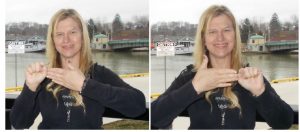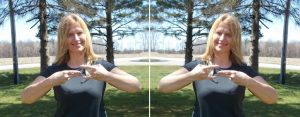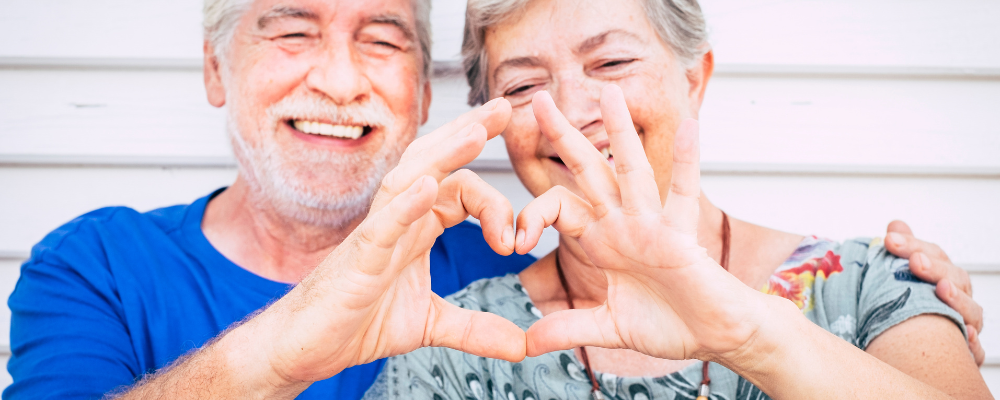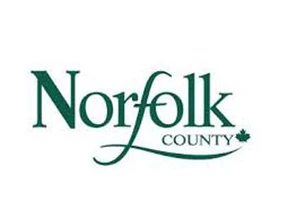Have you ever noticed how many words relate to the behavior of our hands? Today I’m hoping to point out some of my thoughts and get you in touch with the exercises that will help you grasp the idea that dexterity is not only about our hands but also about how our hands and brain work together.
Imagine the simple task of drinking your morning coffee. As soon as you decide you would like to take a sip, your hand takes on a cupping shape even before you consciously reach. When your hand touches the cup, it not only signifies to you contact, but simultaneously provides you with information about the object’s texture and material properties such as the temperature of the cup. As we lift the cup, we soon get access to further information, such as the cup’s weight, firmness, and shape. Grasping is something that’s very subtle. In general, we don’t even think about it. If I want to pick something up, I just do it. It’s an ostensibly simple task accomplished by a complex network of circuitry inside the mind. Researchers at the University of Southern California say that this seemingly trivial action is the result of a complex neuro-motor-mechanical process orchestrated with precision and timing by the brain, the nervous system, and the muscles of the hand. Human brains have developed automated, easily customized routines. When we see a pen, we know how to pick it up and how to write. Building a hand structure is fairly easy but even advanced robotics has not been able to replicate the vast array of tasks that our brain instructs our hands to do during an average day. The human hand is a marvel of dexterity. It can thread a needle, build a house, button a shirt, knit, bake, play sports and even play an intricate melody on a musical instrument.
Dexterity is defined as the coordination of small muscles and movements usually involving the synchronization of hands and fingers with the eyes. Synchronized movement originates in the brain. So, when we do hand exercises, we are not only increasing dexterity we are also strengthening pathways in our brain as well.
Recent research indicates that hand dexterity is more strongly associated with function and performance than handgrip strength among healthy older adults. It is clear, that common tasks such as threading a needle require dexterity and two hand co-ordination. And studies also show that functional aging in hands may be slowed down by introducing the right type of exercise.
There are many brain injuries that affect dexterity. Stroke, MS, and Parkinson’s for instance effect hand movement and dexterity. Common metabolic and skeletal diseases in older adults, such as osteoarthritis, rheumatoid arthritis, osteoporosis, and hormonal changes are important factors in impaired hand function too. As an analogy, imagine going through life wearing winter gloves. If you can grasp things in only the grossest of ways without fine manipulation, life is pretty difficult. Yet millions of people worldwide go through life without the full use of their hands. Losing hand function can degrade our quality of life therefore, hand exercises are very important as we age. One great resource is the Grasp program. You can find the manual at HERE.
In my post rehab journey one of my mentors used to tell me, “ If you can’t, you must”
What she meant was that the more difficult the exercise is for you to do…the more
important it is that you make that exercise a priority. We have a use it or lose it brain
and body. We spend much of our lives on auto pilot. It is important to challenge
ourselves with new exercises every day.
The exercises illustrated below require not only the coordination of hands and fingers
with the eyes, but they also require complex cognitive processes such as attention,
working memory, planning, judgment, flexibility, and inhibition. Additionally, these
types of exercise techniques are believed to improve neuroplasticity. The right hand
connects with the left side of your brain and the left hand to your right brain. The part
of the brain that connects the left to the right is called the corpus callosum. The corpus
callosum is the bridge that joins both sides of the brain and promotes communication
between hemispheres. Hand exercises help improve that connection. The benefits of
performing hand exercises can be seen with pianists or violinists whose manual
dexterity is maintained until a ripe old age presumably as a result of regular hand
exercise. The corpus callosum has been found to be dramatically enlarged in
musicians. It stands to reason that the larger your corpus callosum is, and the better
your brain’s hemispheres are collaborating, and the more horsepower your brain has
access to. Not a musician? No problem. If you’ve attended any of my Stonebridge
exercise classes, you may have noticed I like to sneak in some hand games. These
exercises have been developed to make similar types of connections in our brain. It is
simpler than you may think. To gain the upper hand all you need is a little practice.
Bunny Rabbit/Squirt Gun: Start with bunny ears on the left hand and gun fingers
on the right. Switch back and forth slowly at first and as you master the movement
speed it up.

Fist/Flat hand: Start by making a fist with your left hand and have the other hand
beside it flat and facing you. Next switch back and forth trying to speed up as you get
the movement mastered.

Two In/Two Out: Left hand pointer and middle finger are extended/Right hand
pointer finger and pinkie finger are extended. Switch back and forth.

Thumbs and Pinkies: Left hand thumbs up/Right hand pinky finger up. Switch
back and forth.

Squirt Gun/Ear Tap: Start with your left hand in squirt gun position/ Right hand
crosses your body to palm your left ear with the fingers open. Switch back and forth.

Once you master this set of exercises try clapping your hands in between switching
back and forth. Most of all have fun!






